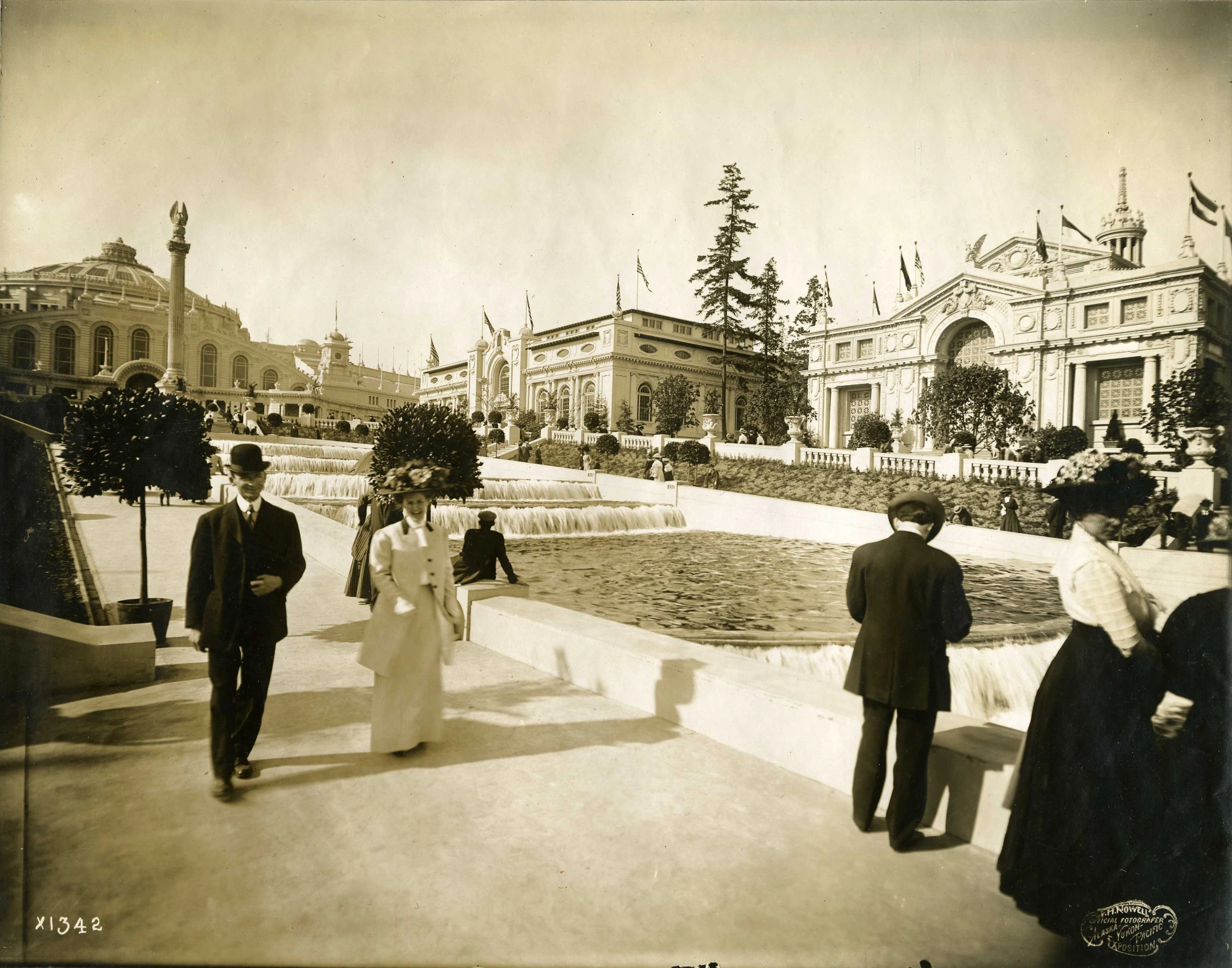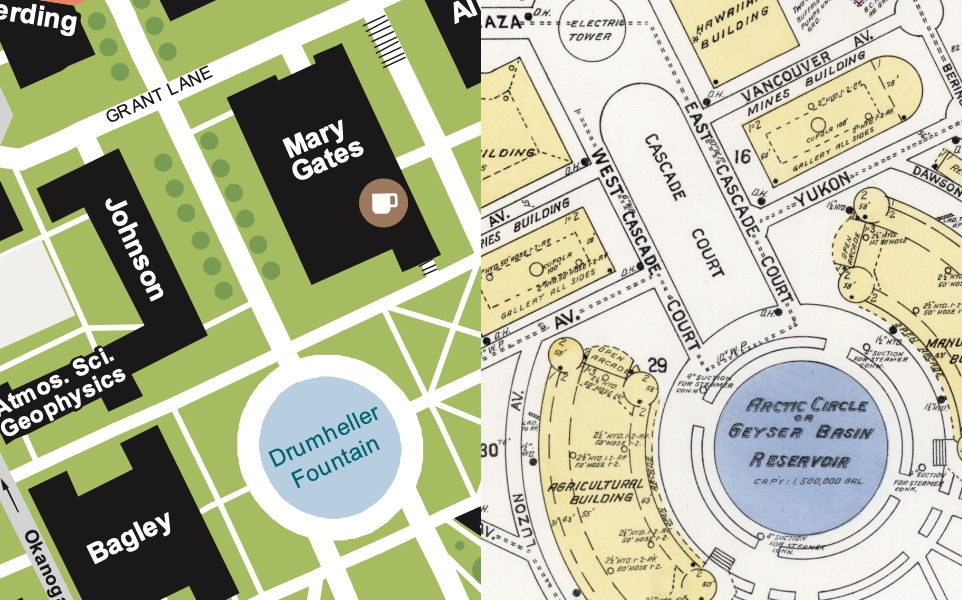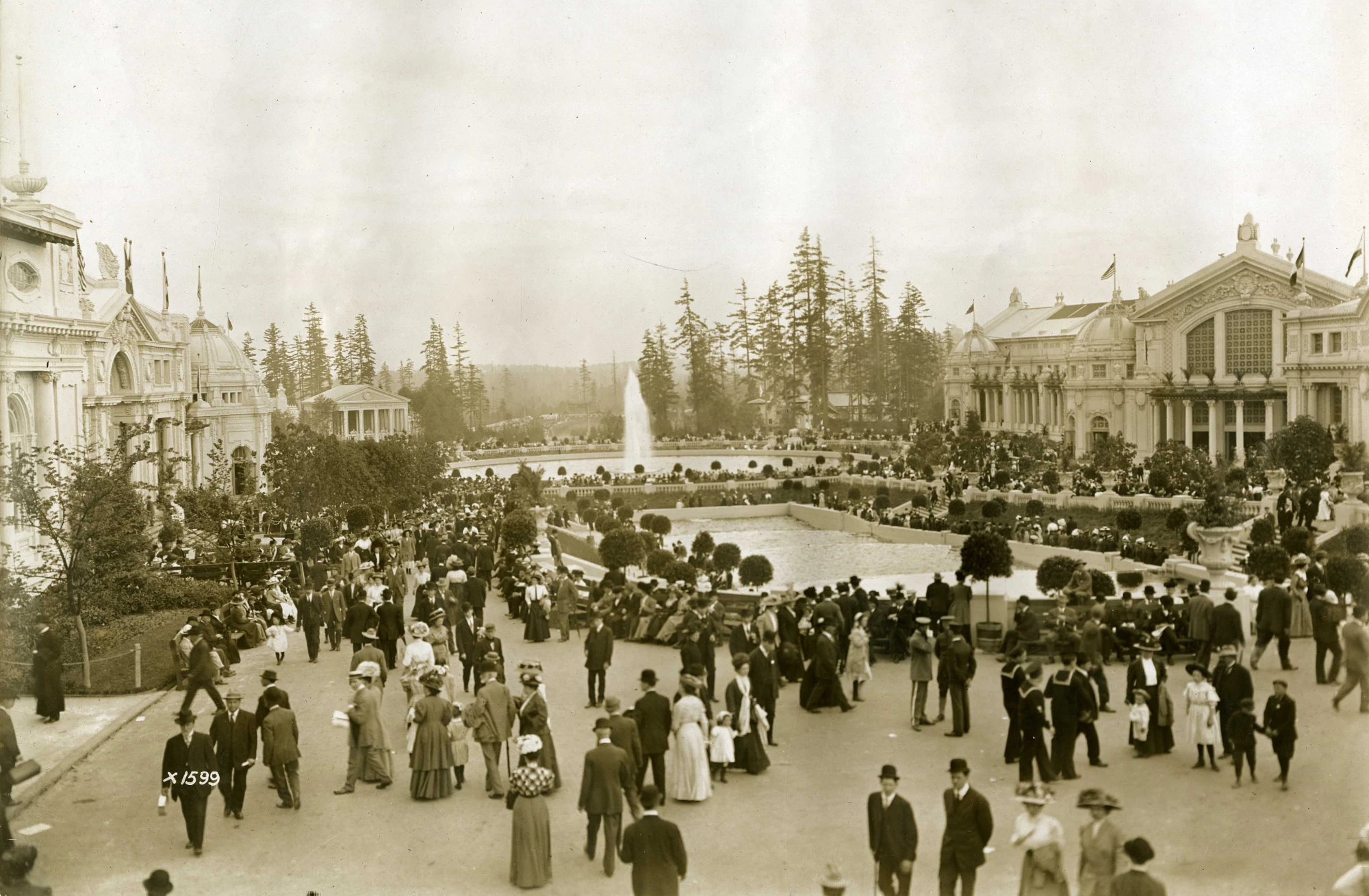Put Cascade (Lane) on the Map Again

“The Cascades pour 40,000 gallons of water over a succession of ledges each minute of the day. They are brilliantly illuminated with colored electrical bulbs at night and present a gorgeous appearance (May 27, 1909).” Courtesy of the National Park Service, Frederick Law Olmsted National Historic Site (02739-05-ph287).
Originally posted as a letter to the editor at The Daily of the University of Washington.
If you walk from Red Square to Drumheller Fountain you’ll pass through a brief nominative void. Down the steps, there’s a stretch of undistinguished asphalt about 150 meters long. Looking at its heaved and cracked surface, you’d never know that 115 years prior, this was where the immense and appropriately-named “Cascade Fountain” poured down the slope into the basin now known as Drumheller Fountain.
When the Alaska-Yukon-Pacific Exposition ended, the “Cascades” and many buildings were dismantled. The beautiful formal gardens of Rainier Vista were maintained for several years by the Seattle Parks Department before returning to the University to become today’s open lawn. Save for its most important elements, Drumheller (née Geyser Basin) and the borrowed landscape of Rainier itself, the grandeur of the science quad is much diminished from its exhibition roots.

The void on the present map and the naming at the time of the Exposition. Left: UW Campus Map. Right: Fire Insurance Map, Sanborn Map Co., Mar. 1909
The university should name the stretch “Cascade Lane NE” for the long-gone fountain. It’ll be a simple and likely free affair. The path is unsigned, and it can remain so. But on the web and for the next printings of campus maps, a small new label should appear.
Board of Regents, say the words: “Cascade Lane.”
It needn’t be a forever name, and it will be useful if only to discuss its eventual replacement. Some beneficent donor should take an interest in improving the Cascade Lane, perhaps fixing whatever causes the asphalt to bulge so much that the mounds are sometimes circled with spray chalk to warn pedestrians. Maybe they’ll help regrade the path to an ADA-compliant 5% slope so students of all abilities can enjoy the 20 cherry trees that surround it. With some thoughtful landscape work, they could remedy what the State Architectural Historian diagnosed as the Vista’s “low level of integrity.” They might be inspired by an elaborate design for all of these changes from 2008 when updates for pedestrian access to the UW Link station were being planned (which was only partially implemented).
We’ll all celebrate if a new name displaces Cascade. It can sidle up against that of Regent Joseph Drumheller, whose 1961 pledge funded the central fountain machinery. Until then, let’s cherish the brightest point in the path’s life, even if it was 115 years ago.
Tell a friend. Tell ASUW. Write a letter to The Daily. Cascade Lane.
